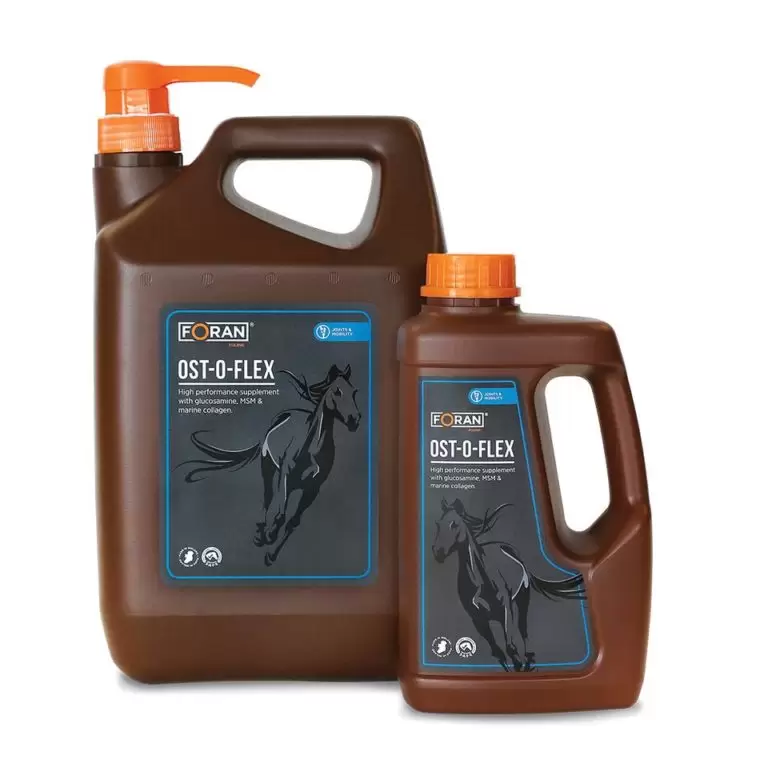Ost-O-Flex
An effective combination to support mobility and joint function
View ProductSo, what makes for a healthy joint in a horse? You’d be hard pushed to find a horse owner that at one time or another hasn’t wondered how best to look after their horse’s joints. To answer this, we need to think about the structure of a joint. Put simply, the junction between two bone ends is a joint, these bone ends are covered in articular cartilage and encased in a sac known as the joint capsule, the inner layer of this capsule has a lining called the synovial membrane, which secretes synovial fluid to prevent friction between the joint structures.
The articular cartilage is made up of a collagen matrix, proteoglycans and water. Proteoglycans give cartilage a firm structure and are made up of chains of glycosaminoglycans (carbohydrate and protein combined). Second to this the synovial fluid has lubricating properties thanks to two key ingredients; hyaluronic acid and lubricin (another type of glycosaminoglycan).

As we know the first few years of life can have a huge impact on the future health of the equine joint; steady and consistent growth at this time supported by a balanced diet can make for strong, healthy joints in the adult horse. Moving on from the early stages general wear and tear of joint tissues is totally normal but will be increased through exercise. Doing what we can to support joint health in the adult horse can limit the severity of the wear and tear being done and potential development of conditions such as Osteoarthritis (OA).


The first few months of the year can present extra challenges to managing and supporting your horse’s joint health. Increased time standing about in stables, cold and damp weather and increased slips and falls on wet ground, can all make your horse appear stiff, it could even result in actual injury to joints. Making joint health a priority throughout winter may improve your horse’s comfort levels and reduce the chances of longer-term issues developing.
Regular farrier visits should be an integral part of looking after your horse at any time but especially in the winter months, believe it or not hooves play a significant role in maintaining joint health. Whether your horse is shod or barefoot, a strong, and most importantly well-balanced hoof will support joints far better than an unbalanced one, as the concussive forces travelling up the limb are spread out in an even manner across the joint surface, limiting damage.
Supporting joint health in adult horses is focused on maintenance and protection from wear and tear, to avoid the development of OA. A balanced diet rich in high quality proteins, carbohydrates, vitamins and minerals, in particular Vitamin D, E and C, calcium, copper and silicon are all crucial and should be provided in a well-balanced diet. Think back to the joint structure and what is involved, and you will see, that in addition to a balanced diet, specific additions to the diet can provide targeted support for joint health, including:
The addition of a joint supplement such as Foran Equine OST-O-FLEX will provide key ingredients and help to maintain and protect joint health in your horse.

If you would like more information on incorporating a joint supplement into your horses diet, ask our expert team here.

